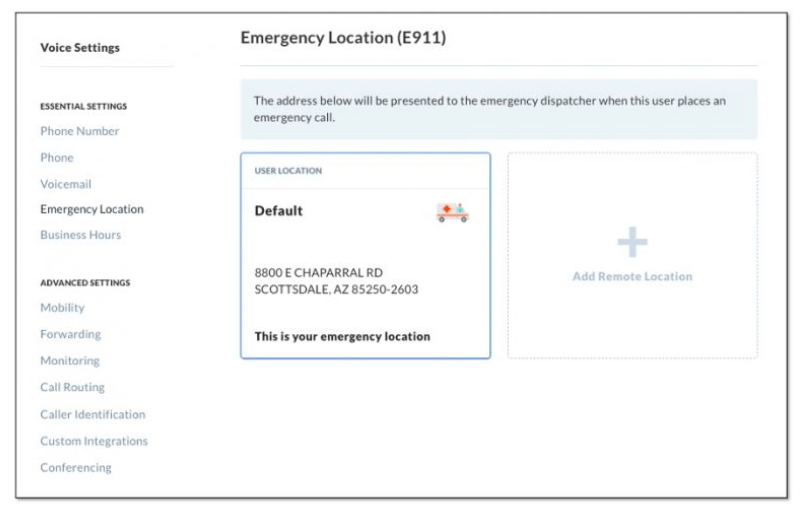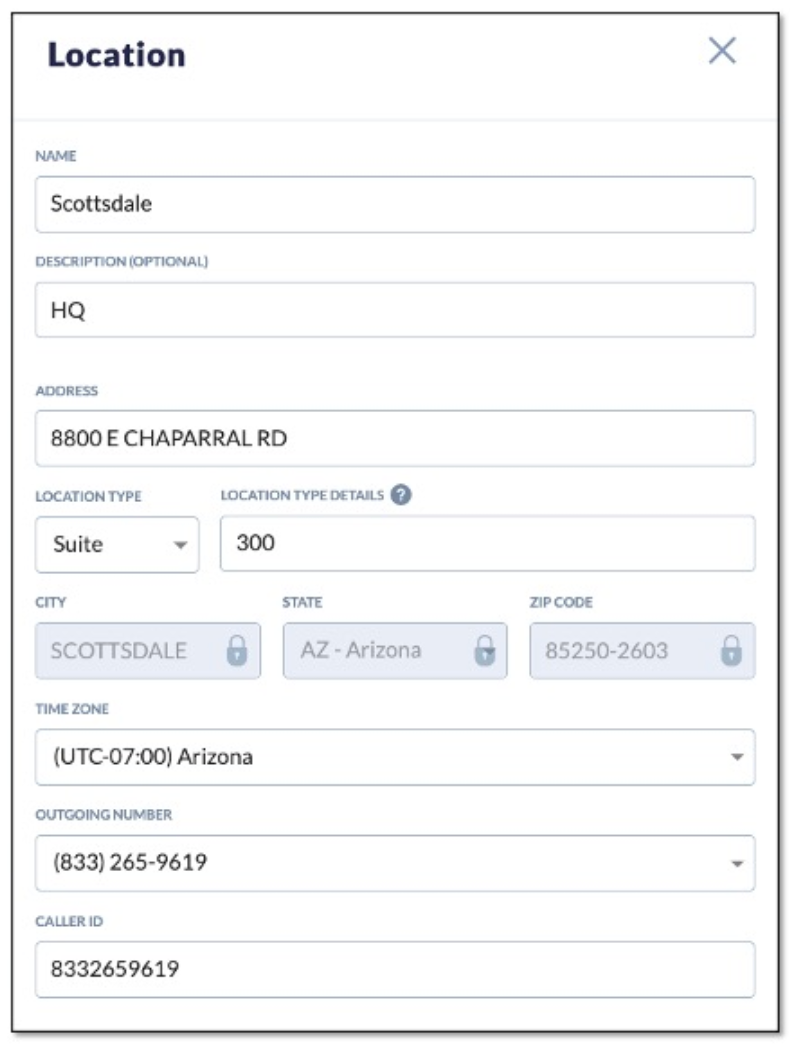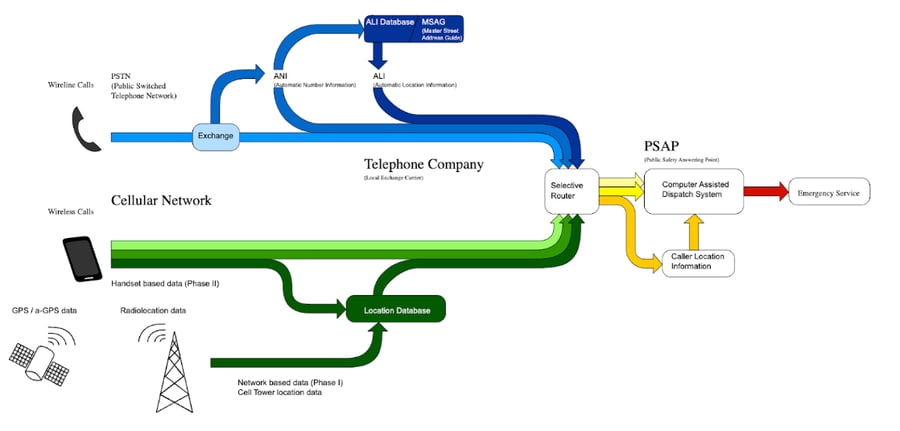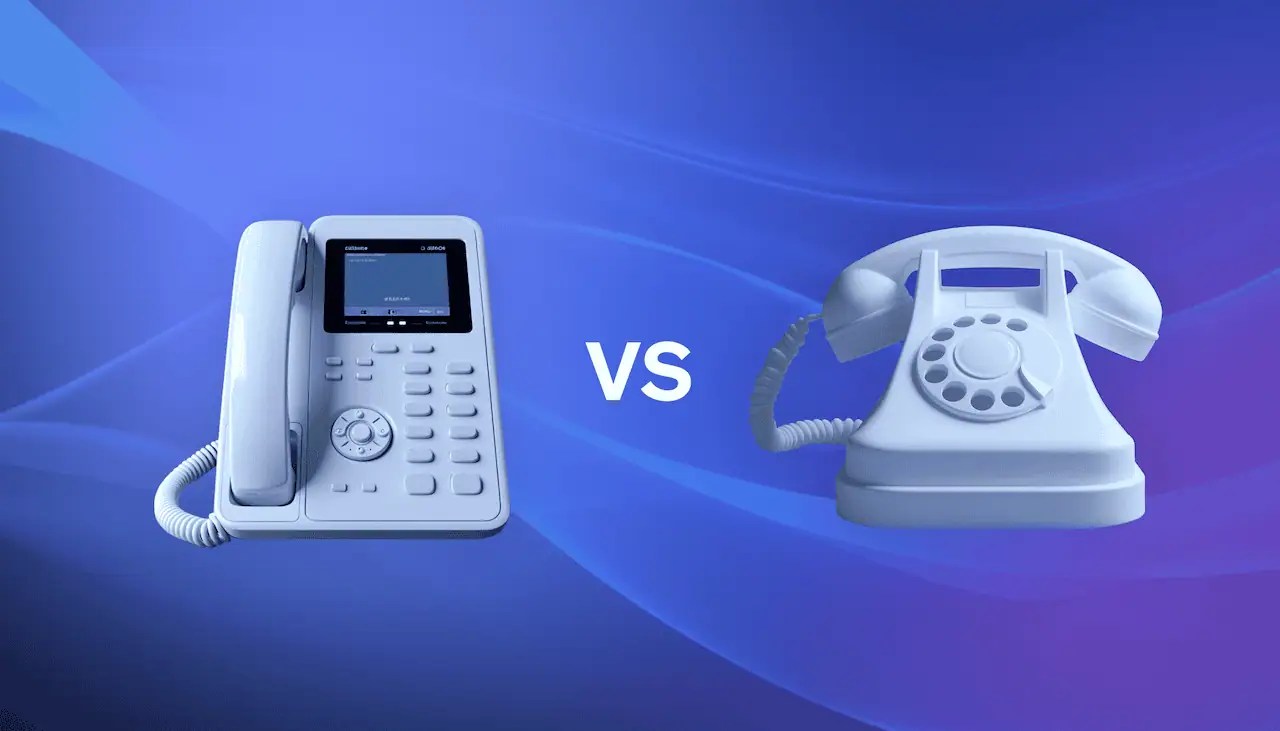Throughout the United States, it’s well-known that if you’re having an emergency, you call 911. The rise of Voice over Internet Protocol (VoIP) and widespread usage of cell phones has not changed this, but it has changed how emergency services receive and respond to mobile and VoIP calls.
During an emergency, every minute can mean life or death. Fortunately, E911 has transformed how we send location details for emergency calls, enabling a more timely and accurate dispatch when an emergency strikes.
E911 has greatly improved emergency service response times, but many business owners might wonder what E911 is and how it works. With that in mind, let’s look at E911, why it’s required, and the benefits of setting up E911 in your office phone system.
Before anything else, we need to understand what E911 is.
What Is E911?
E911 stands for Enhanced 911 and is the part of the public telephone system that automatically ties a location to a phone call.
It’s used by carriers to automatically transmit a caller’s location to emergency personnel when they call 911. This location can be an address or specific coordinates, either of which can make sure that emergency service workers know where to go when called.
For landlines, the location is always easy enough to identify — it’s tied directly to the user’s callback number. But for mobile devices or calls made over VoIP phones with an internet connection, it can be a little more complicated.
When someone makes a VoIP 911 call, they could be calling from anywhere in the world. Knowing the location of the caller’s office won’t be of much help if they’re working remotely from a coffee shop instead, so E911 ensures dispatchers know exactly where to send first responders.

As such, E911 is essential for making sure the caller’s location and situation are accurately reported so that emergency responders can get to them quickly.
E911 is also mandated by RAY BAUM’s Act, which requires that first responders have the information they need to pinpoint a dispatch location, regardless of the device the caller is using. This includes mobile phones and VoIP devices, so any multi-line phone system that can place phone calls must have an E911 system.
E911 Advantages
Many might be wondering, “Can’t 911 already track your calls? What’s so special about E911 that we need entire systems for it?”
There are several benefits to an E911 system that elevate it above traditional 911 calls — and every single advantage can be lifesaving.
Faster emergency response
Consider a scenario where you’re in a burning building and need to call 911. While you could give the dispatcher your address, this can take time, and of course, there’s a good chance that the dispatcher may not be able to hear you properly over the noise of the alarms.
E911, on the other hand, automatically sends the caller’s location to dispatchers, enabling them to respond more quickly. This is especially crucial for situations where every second counts, and emergencies where the caller may be unable to communicate or the line disconnects.
The Wall Street Journal found that E911 systems can help reduce 911 response times by nearly a minute, thus saving thousands of lives.
Improved accuracy
Traditional phone calls to 911 require verbal descriptions of their locations, such as “the corner of Park and Third Street.”
E911, on the other hand, uses GPS or cell tower triangulation for precise location tracking, so emergency services personnel will be able to find the caller, even when they’re on the go.
In a business setting, this is critical to ensure public safety officials send resources to the correct address of callers instead of a postal address.

Enhanced safety
Another benefit of E911 over traditional 911 is the ease and speed at which dispatchers can assess the emergency, receive the location information, and send the appropriate assistance.
It’s not just more accurate, but faster as well, as an E911 system can immediately send vital information to the dispatcher, enabling them to make sure the right help is on the way.
Advanced features
E911 doesn’t stop at location services. E911 systems include features that traditional 911 systems often lack, such as the ability to distinguish a caller’s location based on the device, such as coordinates based on IP addresses for laptops or fixed addresses for VoIP desk phones.
These additional features can help both callers and dispatchers communicate and respond during dangerous situations, and they’re also easy to set up and manage.
How Does E911 Technology Work?
Now that we know what E911 is and what its benefits are, it’s time to understand how it works.
What are the steps that an E911 call goes through once you call for help? This diagram by Evan Mason illustrates how E911 works.

The entire process can be summarized in four stages:
Stage 1. The caller dials 911
As soon as the caller dials 911, the call routing connects them to the local Public Safety Answering Point (PSAP) responsible for the caller’s location. A PSAP is a specialized inbound call center managed by public safety officials.
The E911 system uses the caller’s location to make sure it reaches the caller’s local PSAP to reach the emergency services nearest to them.
At the same time, multi-line phone system operators are notified of 911 calls from their phone service. This helps ensure any callbacks from 911 get a faster response and can be used for calls coming from office buildings to alert security staff so they can initiate their emergency protocols.
Ensure your organization’s phone system is properly configured for 10-digit dialing and 9-8-8 dialing.
Stage 2. Automatic location identification is sent
Once the call reaches the PSAP, the location is provided to them immediately. How this works will vary depending on whether the call is from a landline or mobile device.
For landline calls, the street address is automatically retrieved from a database, based on the phone number. For instance, if you’re calling from a house or office building’s telephone system, the telephone number you’re calling from is already associated with the specific location.
For mobile calls, there are two different ways that the location data gets sent. The first is to send the location data via GPS — this sends specific coordinates to the PSAP.
Alternatively, the E911 system uses cell tower triangulation to find the caller’s location and then passes that information on to the PSAP (though this is less accurate).
Telecom providers must also pass along a VoIP customer’s physical address for their calls.
This is useful for people who work from a single location, especially if they’re in a specific suite or room at their address, but not so much for those who are frequently working while on the move.
Stage 3. Dispatchers confirm the caller’s information
Once the call reaches the local PSAP, the dispatcher immediately receives all the location information, along with the caller’s phone number and any other important information about the emergency, including their company name, the floor and room they’re on, and any other identifiable information that will help emergency responders.
All this information is verified on the operator’s end through their database and other tools at their disposal. That way, they can hone in on the caller’s location as precisely as possible and pass on that information to the emergency responders.
Stage 4. Emergency response begins
Using the information received, the PSAP dispatcher sends the appropriate emergency services to the caller’s location.
Whether the emergency requires police, the fire department, or an ambulance, they’re given the exact location and nature of the emergency so they can get there quickly.
That’s all there is to it. There’s no need for the caller to give directions, as that information is automatically included.
Business Impacts of E911
Naturally, every business needs a way to contact emergency services should the worst happen.
However, the speed of response and location flexibility offered by E911 make it a must-have to enable remote workforces or to ensure employees can receive aid quickly when disaster strikes.
Businesses with physical locations
For businesses with high levels of customer traffic and patrons, such as retail stores, restaurants, and bars, a dependable E911 system that can find a customer’s physical location is invaluable.
Hospitals and other healthcare facilities also need E911, as emergencies, such as fires or other natural disasters, require swift emergency response and accurate location tracking.
Similarly, schools and universities must ensure the safety of their students and faculty members, making E911 essential. When there’s a campus emergency, the accuracy of E911’s location services and the time it saves can make the difference between life and death.
Of course, businesses with office buildings and corporate HQs also need E911 to ensure efficient emergency responses, both for employees and visitors.
Firms with remote or mobile workers
Since E911 can send precise location data to emergency response dispatchers, it’s particularly useful for anyone working remotely or while on the go.
For example, call centers have, by and large, embraced remote work. This means that call center agents require a communications platform with a solid E911 system to ensure that remote employees can access emergency services whenever they’re needed.
Although employees aren’t likely to use their business phone lines for emergencies, seconds count in the event of any emergency. And people look at a phone interface and expect it to reach public safety officials reliably.
Companies with a hybrid workforce
E911 is an essential feature for people who switch between commuting to an office and working from home. These employees likely have a softphone app that’s continuously connected, allowing them to make and receive calls over their internet connection.
For these employees, it’s strongly recommended that you have E911 location information properly assigned to their connected devices and where they are most likely to be found throughout the day.
For instance, you should update your emergency information to include their office and home addresses (if they work from home).
National E911 Regulations To Note
As E911 is used for emergency responses nationwide, it’s no surprise that there are some strict regulations in place. These cover requirements for inclusion, updates, and information provided, which all phone system providers and administrators must be aware of.
Kari’s Law
When someone dials 911, they need to be able to reach emergency services without any further difficulty.
Kari’s Law is designed to mandate just that: the ability to call emergency services just by dialing 911, without the need for any additional extensions, such as dialing 1” before placing an outbound call. In short, the central tenets of Kari’s Law are:
- Every phone system must permit direct dialing of 911 from any phone extension.
- Phone systems must ensure instant connectivity to PSAP without any obstructions.
RAY BAUM’s Act
RAY BAUM’s Act is focused on providing location information to PSAPs, regardless of the telecom platform the caller uses.
This includes the address, suite or apartment number, and any other information that will help emergency services reach the caller quickly. The main requirements of RAY BAUM’s Act are:
- Notify on-site security staff that a 911 call has been made.
- Provide a valid callback number to the caller.
- Transmit detailed caller information to PSAPs.
Implementation and compliance
Proper emergency response capabilities are not optional. The Federal Communications Commission mandates that all wireless carriers provide E911 services, which means that no matter what network you use, E911 is included.
There are also two requirements for carriers when they provide location information for mobile phones, including VoIP calls:
- Phase I compliance: requires carriers to provide the PSAP with the caller’s phone number and cell tower location when they call.
- Phase II compliance: adds more precise location information so that the dispatcher can send the emergency responders to the caller’s exact location.
Continuous updates
E911 is not a “one-and-done” system and requires technology updates to ensure consistent accuracy and reliability. Carriers and service providers are therefore required to continually update their E911 capabilities.
Administrators are responsible for ensuring phone system users’ addresses and contact information are current. It’s advised to make this a required step for employee onboarding.
State-level regulations
While the above regulations are standard throughout the country, individual states may have additional rules and requirements. It’s important to understand what the specific E911 regulations are for any state your company operates in.
Be sure to review the requirements for your phone systems with a licensed attorney to make sure you’re in full compliance.
The Easiest Phone System for Your Entire Team
Many organizations find themselves struggling to retrofit aging telecom systems. From replacement parts to the technical experts to conduct the implementation, it’s a hassle. If this sounds familiar, worry not. Nextiva helps companies of all sizes migrate to a cloud-based phone system every day.
Reliability is a cornerstone of the Nextiva network. It spans eight redundant data centers across the U.S., so billions of phone calls are connected reliably and instantly every year. All you have to do is sign in, and Nextiva does the rest.

In addition to superior connectivity, you also get Amazing Service, where anytime you need help, experts help you solve your communication needs. Adding a new team? No problem. Need to go fully remote, hybrid, or return to the office? We’ve got you covered.
Over 150,000 businesses use Nextiva for their company’s communications.
Ready to take the next step?
Get a personalized quote today — it might be less than you think.

















 VoIP
VoIP 






![Five9 vs. NICE CXone: A Detailed Comparison [2025 Guide]](https://www.nextiva.com/cdn-cgi/image/width=1200,height=676,fit=cover,gravity=auto,format=auto/blog/wp-content/uploads/sites/10/2024/04/five9-vs-nice-incontact.webp)
